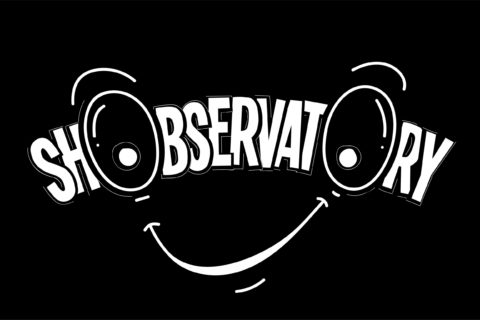By removing the limits structures puts on research, you can create more value by better engaging participants, widening your perspective and viewing the world more realistically. Qualitative researchers – rip up your discussion guides. Quantitative researchers – forget data traditions. It’s time to stop using structure.
You likely love structure. It gives you order, safety and helps make sense of the world. This is partly true. However, structure limits how much value your research creates as:
Structure kills participant engagement
People don’t like structure’s enforced neatness. This is because enforced neatness means people aren’t in control of their environment. Enforcing research structures onto your research participants is therefore supplying a negative research user experience. This then reduces the engagement quality between yourself and participants.
Borders misrepresent the world
We often – rightly – use categories and segments within marketing. So much so that Al & Laura Ries say a brand must promote its category to grow.
However, categories and segments are perceptual. They don’t really exist – people don’t buy/use/compare on a per category basis. Therefore, category borders in research limit how much you can understand people’s behaviour.
Innovation needs broad thinking
Bringing diverse types of people together breeds creative thinking. Quality innovation follows. Overly structured sampling has the reverse effect. A rigid sample has people who all think the same. Consequently, such a sample won’t give enough variety of perspectives to breed creativity and innovation.
You can shatter the limits structure places on research by using:
Research au naturel
Marketers must be market orientated – it’s the only way to prioritize customers. The best way to do this is by spending time with people and talking with them. No discussion guides. No viewing rooms. Simply spending time with the people your business serves, conversing normally will be more insightful than watching an unnatural, structured conversation behind one-way glass.
As B2B marketer Brian Macreadie says:
“Real marketers go down the pub at midday – where real life happens”
Big Broad data
You probably use multiple data streams to meet your research aims. Often this means using ‘big’ data. But is big data better data? Not if ‘big’ only means ‘big’ within a perceptual structure like a category.
Data can add more value by being broad – when it measures what’s happening outside of a category but still effects the behaviour in it.
For example, software company Cornerstone surveyed 50,000 customer service workers. They found those completing the survey on a non-default browser stayed in their jobs 15% longer vs. those using a default browser.
Cornerstone’s insight was that using a non-default browser shows an informed view of the world and this resulted in better performance at work. Job longevity then follows. Cornerstone unearthed this by going broad, not big, with data.
Random interactions
We all live in pre-determined structures. While necessary, these limit how much we understand the world around us. Such structures include teams at work, families and friendship groups. Even in the potentially borderless world of the internet, we live in what Eli Pariser calls “filter bubbles” where online search behaviour reflects our established interests over new areas of information. Structures, in this context, prevents you from finding new knowledge by limiting who/what you interact with.
Therefore, it’s time to break free and find new information sources. Do so by creating unnatural interactions. For example, force Finance into watching an innovation workshop, push Product Development towards the shop floor and cajole Customer Services into attending a financial audit.
By removing structure, promoting naturalness, breadth and randomness your research will become more valuable by creating:
Better participant engagement
Marketing Professor Jonah Berger states that if you give people agency, they’re more likely to behave as you want them too. In research, this could mean being more engaged, creating better ideas or revealing sensitive information. In any case, removing structure and allowing people to talk as they’d like, in a structure-less way, can increase participant engagement.
A real-world perspective
The world is many shades of grey. However, structure makes it look black and white. Therefore, removing structure allows you to better reflect the world you’re trying to understand.
Yes, it makes research messier. But the world is a messy and chaotic place.
However, military strategist John Boyd states that it’s being able to make quick decisions among chaos – not relying on structure – that wins in conflict.
Broader thinking = better innovation
More diverse minds in samples and random interactions broadens your ‘frame of reference’. This allows you view a truly bigger picture. This bigger picture view of the world leads to better solutions. And innovation after all is creative problem solving. Sociologist Howard Aldrich credits entrepreneur’s ability in this area as a key cause of their success not – as is widely thought – their individual creativity.
Structure – you’ve done us proud for a long time. Too long. So, let’s embrace naturalness, breadth and randomness more. And in doing so, keep it real and let research create more value.



1 comment
Thanks Jack for sharing a thought provoking article. As a Qualitative researcher, I am supposedly a proponent of ‘unstructured’ research approach but I believe that we are still very structure bound ( group discussions are a epitome of structure)……ethnography , random consumer interactions etc…are the way to go but to do that we have to win client’s confidence in pursuing these more regularly….which sometimes proves to be a challenge. We certainly need more debate and discussions on how to make research more fluid and organic in near future. Your article certainly is a good starting point!